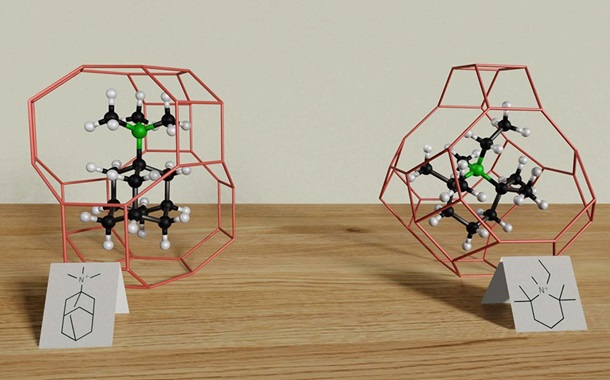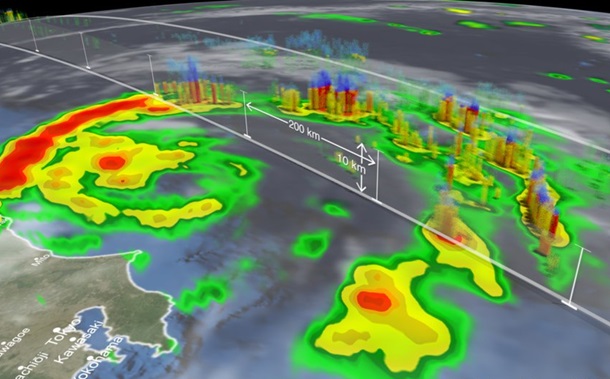ML and DL Models for Stroke Prediction from Bio-Signals: A Systematic Review and Bibliometric Analysis
Downloads
Strokes continue to be a primary reason for disability and death around the globe. Annually, over 12.2 million new strokes occur, which necessitates the development of early detection and intervention tools to reduce the potential harm. This systematic review and bibliometric analysis aim to review and visualize recent advances in predicting stroke or post-stroke effects using bio-signals, either with machine learning (ML) or deep learning (DL). The included studies were published between 2016 and 2024. A comprehensive search of IEEE, PubMed, MDPI, and ScienceDirect databases was performed using keywords related to stroke prediction, machine learning, deep learning, and bio-signals. From an initial pool of 152 studies, 15 studies met the inclusion criteria through the screening process. South Korea contributed the most to publishing studies on stroke prediction using bio-signals. The results show that Electroencephalography (EEG) is the most used bio-signal in the reviewed studies. The sample size ranged from 3 to 4068. The top ten cited journals in the selected literature are high-ranked journals, which indicates the scientific validity of the concept and its potential for dissemination.
Downloads
[1] Feigin, V. L., Brainin, M., Norrving, B., Martins, S., Sacco, R. L., Hacke, W., Fisher, M., Pandian, J., & Lindsay, P. (2022). World Stroke Organization (WSO): Global Stroke Fact Sheet 2022. International Journal of Stroke, 17(1), 18–29. doi:10.1177/17474930211065917.
[2] Upadhyay, S. K., Dan, S., & Ali, S. A. (2024). Evidence-Based Neurological Disorders: Symptoms, Causes, and Therapy. Jenny Stanford Publishing, New Yorkm, United States. doi:10.1201/9781003496342.
[3] Dehkharghani, S. (2021). Stroke. Exon Publications, Brisbane, Australia. doi:10.36255/exonpublications.stroke.2021.
[4] Stallard, J. (2019). CT Vs MRI: What’s the Difference? and How Do Doctors Choose Which Imaging Method to Use? — Memorial Sloan Kettering Cancer Center, New York, United States. Available online: https://www.mskcc.org/news/ct-vs-mri-what-s-difference-and-how-do-doctors-choose-which-imaging-method-use (accessed on August 2025).
[5] Marsicano, G., Bertini, C., & Ronconi, L. (2024). Decoding cognition in neurodevelopmental, psychiatric and neurological conditions with multivariate pattern analysis of EEG data. Neuroscience and Biobehavioral Reviews, 164, 105795. doi:10.1016/j.neubiorev.2024.105795.
[6] Dykiert, I., Florek, K., Kraik, K., Gac, P., Poreba, R., & Poreba, M. (2024). Tpeak-Tend ECG Marker in Obesity and Cardiovascular Diseases: A Comprehensive Review. Scientifica, 4904508. doi:10.1155/2024/4904508.
[7] Taha, M. A., & Morren, J. A. (2024). The role of artificial intelligence in electrodiagnostic and neuromuscular medicine: Current state and future directions. Muscle and Nerve, 69(3), 260–272. doi:10.1002/mus.28023.
[8] Mehta, S., Kwatra, N., Jain, M., & McDuff, D. (2024). Examining the challenges of blood pressure estimation via photoplethysmogram. Scientific Reports, 14, 18318. doi:10.1038/s41598-024-68862-1.
[9] Katan, M., & Luft, A. (2018). Global Burden of Stroke. Seminars in Neurology, 38(2), 208–211. doi:10.1055/s-0038-1649503.
[10] Zen, H., Dasari, N. M., Latha, Y. M., & Rao, S. S. (2023). Soft Computing and Signal Processing. Proceedings of 6th ICSCSP, 2. doi:10.1007/978-981-99-8451-0.
[11] Siontis, K. C., Yao, X., Pirruccello, J. P., Philippakis, A. A., & Noseworthy, P. A. (2020). How Will Machine Learning Inform the Clinical Care of Atrial Fibrillation? Circulation Research, 127(1), 155–169. doi:10.1161/CIRCRESAHA.120.316401.
[12] Tsiamalou, A., Dardiotis, E., Paterakis, K., Fotakopoulos, G., Liampas, I., Sgantzos, M., Siokas, V., & Brotis, A. G. (2022). EEG in Neurorehabilitation: A Bibliometric Analysis and Content Review. Neurology International, 14(4), 1046–1061. doi:10.3390/neurolint14040084.
[13] Cerasa, A., Tartarisco, G., Bruschetta, R., Ciancarelli, I., Morone, G., Calabrò, R. S., Pioggia, G., Tonin, P., & Iosa, M. (2022). Predicting Outcome in Patients with Brain Injury: Differences between Machine Learning versus Conventional Statistics. Biomedicines, 10(9), 2267. doi:10.3390/biomedicines10092267.
[14] Murat, F., Sadak, F., Yildirim, O., Talo, M., Murat, E., Karabatak, M., Demir, Y., Tan, R. S., & Acharya, U. R. (2021). Review of deep learning-based atrial fibrillation detection studies. International Journal of Environmental Research and Public Health, 18(21), 11302. doi:10.3390/ijerph182111302.
[15] Choi, Y. A., Park, S. J., Jun, J. A., Pyo, C. S., Cho, K. H., Lee, H. S., & Yu, J. H. (2021). Deep learning-based stroke disease prediction system using real-time bio signals. Sensors, 21(13), 4269. doi:10.3390/s21134269.
[16] Choi, Y. A., Park, S., Jun, J. A., Ho, C. M. B., Pyo, C. S., Lee, H., & Yu, J. (2021). Machine-learning-based elderly stroke monitoring system using electroencephalography vital signals. Applied Sciences (Switzerland), 11(4), 1–18. doi:10.3390/app11041761.
[17] Islam, M. S., Hussain, I., Rahman, M. M., Park, S. J., & Hossain, M. A. (2022). Explainable Artificial Intelligence Model for Stroke Prediction Using EEG Signal. Sensors, 22(24), 9859. doi:10.3390/s22249859.
[18] Kumar, S., & Sengupta, A. (2022). EEG Classification for Stroke Detection Using Deep Learning Networks. 2nd International Conference on Emerging Frontiers in Electrical and Electronic Technologies, ICEFEET 2022, 9847883. doi:10.1109/ICEFEET51821.2022.9847883.
[19] Anand Kumar, M., Abirami, N., Guru Prasad, M. S., & Mohankumar, M. (2022). Stroke Disease Prediction based on ECG Signals using Deep Learning Techniques. Proceedings of International Conference on Computational Intelligence and Sustainable Engineering Solution, CISES 2022, 453–458. doi:10.1109/CISES54857.2022.9844403.
[20] Yu, J., Park, S., Kwon, S. H., Cho, K. H., & Lee, H. (2022). AI-Based Stroke Disease Prediction System Using ECG and PPG Bio-Signals. IEEE Access, 10, 43623–43638. doi:10.1109/ACCESS.2022.3169284.
[21] Mak, J., Kocanaogullari, D., Huang, X., Kersey, J., Shih, M., Grattan, E. S., Skidmore, E. R., Wittenberg, G. F., Ostadabbas, S., & Akcakaya, M. (2022). Detection of Stroke-Induced Visual Neglect and Target Response Prediction Using Augmented Reality and Electroencephalography. IEEE Transactions on Neural Systems and Rehabilitation Engineering, 30, 1840–1850. doi:10.1109/TNSRE.2022.3188184.
[22] Kunwar, P., & Choudhary, P. (2023). A stacked ensemble model for automatic stroke prediction using only raw electrocardiogram. Intelligent Systems with Applications, 17, 200165. doi:10.1016/j.iswa.2022.200165.
[23] Elbagoury, B. M., Vladareanu, L., Vlădăreanu, V., Salem, A. B., Travediu, A. M., & Roushdy, M. I. (2023). A Hybrid Stacked CNN and Residual Feedback GMDH-LSTM Deep Learning Model for Stroke Prediction Applied on Mobile AI Smart Hospital Platform. Sensors, 23(7), 3500. doi:10.3390/s23073500.
[24] Lee, J., Kim, Y., & Kim, E. (2024). Data-Driven Stroke Classification Utilizing Electromyographic Muscle Features and Machine Learning Techniques. Applied Sciences (Switzerland), 14(18), 8430. doi:10.3390/app14188430.
[25] Rathakrishnan, K., Min, S. N., & Park, S. J. (2021). Evaluation of ECG features for the classification of post-stroke survivors with a diagnostic approach. Applied Sciences (Switzerland), 11(1), 1–16. doi:10.3390/app11010192.
[26] Yu, J., Park, S., Kwon, S. H., Ho, C. M. B., Pyo, C. S., & Lee, H. (2020). AI-based stroke disease prediction system using real-time electromyography signals. Applied Sciences (Switzerland), 10(19), 6791. doi:10.3390/app10196791.
[27] Laghari, A., Memon, Z. A., Ullah, S., & Hussain, I. (2018). Cyber physical system for stroke detection. IEEE Access, 6, 37444–37453. doi:10.1109/ACCESS.2018.2851540.
[28] Wilkinson, C. M., Burrell, J. I., Kuziek, J. W. P., Thirunavukkarasu, S., Buck, B. H., & Mathewson, K. E. (2020). Predicting stroke severity with a 3-min recording from the Muse portable EEG system for rapid diagnosis of stroke. Scientific Reports, 10(1), 18465. doi:10.1038/s41598-020-75379-w.
[29] Choi, J., Kang, H., Chung, S. H., Kim, Y., Lee, U. H., Lee, J. M., Kim, S. J., Chun, M. H., & Kim, H. (2016). Detecting voluntary gait intention of chronic stroke patients towards top-down gait rehabilitation using EEG. Proceedings of the Annual International Conference of the IEEE Engineering in Medicine and Biology Society, EMBS, 2016-October, 1560–1563. doi:10.1109/EMBC.2016.7591009.
[30] Lim, W. M., Kumar, S., & Donthu, N. (2024). How to combine and clean bibliometric data and use bibliometric tools synergistically: Guidelines using metaverse research. Journal of Business Research, 182, 114760. doi:10.1016/j.jbusres.2024.114760.
[31] Waltman, L., van Eck, N. J., & Noyons, E. C. M. (2010). A unified approach to mapping and clustering of bibliometric networks. Journal of Informetrics, 4(4), 629–635. doi:10.1016/j.joi.2010.07.002.
[32] Riley, R. D., Ensor, J., Snell, K. I. E., Archer, L., Whittle, R., Dhiman, P., Alderman, J., Liu, X., Kirton, L., Manson-Whitton, J., van Smeden, M., Moons, K. G., Nirantharakumar, K., Cazier, J. B., Denniston, A. K., Van Calster, B., & Collins, G. S. (2025). Importance of sample size on the quality and utility of AI-based prediction models for healthcare. The Lancet Digital Health, 7(6), 100857. doi:10.1016/j.landig.2025.01.013.
[33] Zantvoort, K., Nacke, B., Görlich, D., Hornstein, S., Jacobi, C., & Funk, B. (2024). Estimation of minimal data sets sizes for machine learning predictions in digital mental health interventions. NPJ Digital Medicine, 7, 361. doi:10.1038/s41746-024-01360-w.
[34] Belhadi, A., Lind, P. G., Djenouri, Y., & Yazidi, A. (2025). Enhanced visibility graph for EEG classification. Frontiers in Neuroscience, 19. doi:10.3389/fnins.2025.1541062.
[35] Becerra, M. A., Duque-Mejia, C., Castro-Ospina, A., Serna-Guarín, L., Mejía, C., & Duque-Grisales, E. (2025). EEG-Based Biometric Identification and Emotion Recognition: An Overview. Computers, 14(8), 299. doi:10.3390/computers14080299.
[36] Stancin, I., Cifrek, M., & Jovic, A. (2021). A review of EEG signal features and their application in driver drowsiness detection systems. Sensors, 21(11), 3786. doi:10.3390/s21113786.
[37] Rajwal, S., & Aggarwal, S. (2023). Convolutional Neural Network-Based EEG Signal Analysis: A Systematic Review. Archives of Computational Methods in Engineering, 30(6), 3585–3615. doi:10.1007/s11831-023-09920-1.
- This work (including HTML and PDF Files) is licensed under a Creative Commons Attribution 4.0 International License.






















